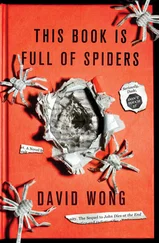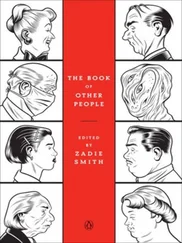THE 1,200-LB CHESHIRE
In 1801 President Thomas Jefferson received this cheddar-like tribute from the tiny town of Cheshire in the Berkshire Mountains of Massachusetts. Named the Ultra-Democratic, Anti-Federalist Cheese of Cheshire, it was shipped to Washington, DC, by sled, boat and wagon to honour Jefferson’s triumph over the Federalists. The originator of the cheese was a preacher named John Leland, who took advantage of all the fuss and publicity to proselytise for his church. Duly impressed, Jefferson donated $200 to Leland’s congregation.
THE 1,100-LB CHEDDAR
The Great Pennard Cheese, 9 ft in diameter, was a wedding gift to Queen Victoria in 1840. Puzzled and somewhat embarrassed by not knowing what to do with it, the queen was relieved when its makers asked if they could borrow it to exhibit it around England. But when they tried to return the grubby, show-worn cheese, Victoria refused to accept it. After lengthy quarrels over its disposition, the cheddar was finally surrendered to the British Chancery, where it gradually disappeared. In 1989, John Green of West Pennard recreated the Great Pennard Cheese, but added 100 lb.
THE 1,000-LB LUNI CHEESE
One of the lesser-known wonders of the ancient world, the 1,000-lb Luni cheese, named after an ancient town in northern Italy, was reported by Pliny in his Natural History about AD77. Manufactured in what is now Tuscany, near the famous Carrara marble quarries in central Italy, the Luni cheese was probably made from a mixture of cow’s and goat’s milk. It is supposed to have tasted like a cross between cheddar and parmesan.
THE 1,000-LB CHEDDAR
The largest cheese to travel halfway around the world, this half-ton cheddar was taken to London all the way from New Zealand. It was the star attraction at the Wembley Exposition of 1924.
– S.R. & C.F.
5 BODY PARTS NAMED AFTER ITALIANS
1. ORGAN OF CORTI
The organ of hearing in the middle ear. Alfonso Corti (1822–78) was an Italian nobleman who studied medicine and anatomy in Vienna, writing his thesis on the cardiovascular system of reptiles. He published his findings on the inner ear in 1851, the year that he inherited estates and titles from his father and retired from scientific research.
2. EUSTACHIAN TUBE
A tube leading from the middle ear to the throat. Its purpose is to equalise pressure in the ear. It is named after Bartolommeo Eustachio (c.1513–74), considered one of the fathers of anatomy, who lived much of his life in Rome, working as a physician to leading churchmen, including two future saints, Charles Borromeo and Philip Neri.
It has been suggested that Eustachio’s discovery of the connection between the middle ear and the pharynx was known to Shakespeare and suggested the means of murder (poison poured in the ear) used by Claudio to kill Hamlet’s father.
3. FALLOPIAN TUBES
The pair of tubes that conduct the egg from the ovary to the uterus in the female. They are named after Gabriel Fallopius (1523–62), who spent much of his adult life as a professor of anatomy at Pisa and Padua (early attempts to practise as a surgeon resulted in the deaths of several patients and Fallopius decided that an academic career was a safer option). He was the first person to coin the word ‘vagina’ and also invented a kind of contraceptive sheath which he tested out on more than a thousand men in what was, perhaps, the first medical trial of condom efficacy.
4. RUFFINI’S CORPUSCLES
Sensory nerve-endings that respond to warmth. Named after Angelo Ruffini (1864–1929), who used gold chloride to stain microscope slides of anatomical specimens, thus revealing the tiny and sensitive corpuscles. Ruffini began his career as a country doctor but ended it as a professor at the University of Bologna. His major researches were into the embryology of birds and amphibians.
5. SERTOLI CELLS
Cells of the testis that serve to nourish sperm cells. Named after histologist Enrico Sertoli (1842–1910) who discovered them in 1865, when he was still a postgraduate student of physiology in Vienna. The year after his discovery Sertoli returned to his native country to fight for Italian forces against an invading army from Austria. His later life was spent as a professor of anatomy and physiology in Milan.
– K.A.M. & N.R.
9 BODY PARTS YOU DIDN’T KNOW HAD NAMES
EPONYCHIUM
Another term for the cuticle of the fingernail, a narrow band of epidermal tissue that extends down over the margin of the nail wall.
FRENUM GLANDIS
Found in the male reproductive system, this delicate fold of skin attaches the foreskin to the undersurface of the glans.
GLABELLA
A flattened area of the frontal bone (forehead area) between the frontal eminences and the superciliary arches (eyebrows), just above the nose.
LUNNULE
The white crescent-shaped mark at the base of a fingernail.
OTOLITHS
Particles of calcium carbonate in the utricles and saccules of the inner ears. The otoliths respond to gravity by sliding in the direction of the ground and causing sensitive hairs to bend, thus generating nervous impulses important in maintaining equilibrium.
PHALANX
One of the bones of the fingers or toes. There are two phalanges in each thumb and big toe, while there are three phalanges in all other fingers and toes, making a total of 14 in each hand or foot.
PHILTRUM
The vertical groove in the middle portion of the upper lip.
PUDENDUM
A collective name for the external genitalia of the female; also known as the vulva. It includes the mons pubis, the labia majora, and the labia minora.
CANTHUS
The corners of the eye where the upper and lower eyelids meet.
– K.A.M. & N.R.
14 NOTABLE EVENTS THAT HAPPENED UNDER THE INFLUENCE OF ALCOHOL
THE VISIT OF KING CHRISTIAN VI OF DENMARK TO THE COURT OF JAMES I (1606)
In 1606 King Christian IV of Denmark and Norway paid a visit to his royal brother-in-law, James I of England and VI of Scotland. The English courtiers were no strangers to alcohol, but even they were astonished by the prodigious boozing of Christian and his entourage. Several official ceremonies descended into chaos and farce as Danes and English, men and women alike, competed to see who could down the most drink. During a court masque, figures representing Faith, Hope and Charity appeared before the two kings. Faith was so drunk she could not utter a word of her speech and Hope fell over. The Danish king attempted to dance with one of the other actors but tumbled to the floor and had to be carried, comatose, to his room. Indeed most of the performers in the masque, according to a witness, ‘went backward or fell down, wine did so occupy their upper chambers’.
THE HANGING OF CAPTAIN KIDD (1701)
Captain William Kidd was sentenced to death for murder and piracy and led to the gallows at London’s Execution Dock on May 23, 1701. The execution itself was a fiasco. As a large group of spectators sang a series of ballads in honour of the pirate, a very drunk public executioner attempted to hang Kidd, who was so smashed that he could hardly stand. Then the rope broke and Kidd fell over into the mud. Though a second attempt at hanging the prisoner succeeded, the sheriff in charge was later harshly criticised in a published editorial for the bungled performance.
BOSTON TEA PARTY (1773)
In Boston, Massachusetts, 50 colonials and members of the Committee of Correspondence met at the home of a printer named Benjamin Edes at about 4 pm on December 16, 1773. Later that evening, they intended to destroy the tea aboard three ships in Boston harbour as a protest against the British government’s taxation of the American colonies. To bolster their resolve, Edes filled a massive punch bowl with a potent rum concoction. Edes’s son Peter had the job of keeping the bowl filled, which proved to be an almost impossible task because of the ardour with which the patriots drank. Shortly after 6 pm the men, most of whom were now in a noisy, festive mood, with a few staggering noticeably, departed and marched to Griffin’s Wharf, where the tea ships were anchored. For the next three hours they sobered up — a number becoming violently ill — as they dumped heavy tea chests into the harbour — and set off the American Revolution.
Читать дальше












